John Deere is a trusted name in farm equipment, but even the best brands can have issues. John Deere Differential Lock Problems are one of the most common problems with John Deere tractors. This problem can cause the tractor to veer to one side, making it difficult to control.
Note: The differential lock is a feature that allows the tractor to turn even when one wheel is on a different surface than the other. This can be useful in many situations, but it can also cause problems if not used properly.
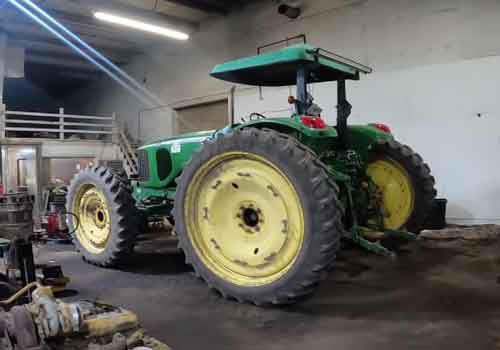
Here are some tips to help you avoid differential lock problems:
- Make sure both wheels are on the same surface before engaging the differential lock. Otherwise, one wheel will spin and could cause damage to the drivetrain.
- Don’t engage the differential lock while moving. This can cause sudden changes in direction and could lead to an accident.
- Be aware of your surroundings when using the differential lock.
Make sure there is nothing in your path that could be damaged by the spinning tires.
John Deere Differential Lock Problems with Fix
1. Difficult to engage
When using the John Deere diff lock to engage reverse, the diff lock will not engage.
FIX
To fix the issue, slowly turn the inside screw counterclockwise, until the diff lock engages.
Difficulty in engaging during on-highway driving conditions. The key will constantly be in the locked position and you may hear a grinding noise. The vehicle may also vibrate.
2. Difficult to disengage
When disengaging the John Deere diff lock, the vehicle may be difficult to drive.
FIX
To fix this issue, replace the screw and/or adjust the clutch plate to eliminate any unnecessary play. When using your differential locks, you experience excessive rubbing sound or excessive vibration coming from the left rear wheel area.
3. Total Differential Lock failure
When using the differential locks, the vehicle will not move. This can have several different causes such as broken rings and pinion gears.
FIX
To fix this, replace the differential locks with a new set. At speed and in any forward gear, the left front tire will not spin when you have applied the diff lock lever. This can be caused by the C-clip on the clutch arm breaking off or bending, thus preventing it from engaging the shoulder of the diff lock arm.
4. Clutch leaking fluid when engaged
When engaged the vehicle will not move. This can have several different causes such as broken rings and pinion gears.
FIX
To fix this, replace the differential locks with a new set. At speed and in any forward gear, the left rear tire will not spin when you have applied the diff lock lever. This can be caused by the C-clip on the clutch arm breaking off or bending, thus preventing it from engaging the shoulder of the diff lock arm.
5. Differential lock overload on traction surfaces
The John Deere diff lock is designed to engage on traction surfaces. However, if the differential locks are engaged while driving and the vehicle starts to spin or lose traction, you may experience some problems with traction.
FIX
To fix this issue, disconnect the power steering belt so that it cannot be damaged. Remove the tire/wheel assembly from the CV joint and inspect and clean contact points. To stop this from happening again, turn off the drive assist slightly to slow down when turning and reduce shifting of the diff lock levers when backing up.
How Do You Tell If Locking Differential is Working?
A locking differential is a device that allows both wheels on an axle to receive equal torque. It is typically used on off-road vehicles that need extra traction in low-traction situations. There are several ways to tell if a locking differential is working properly.
One way to tell is by looking at the vehicle’s tires. If both tires are turning at the same speed, then the locking differential is likely working properly. Another way to tell is by listening for any unusual noises coming from the differential.
If everything sounds normal, then it is probably functioning correctly. If you suspect that your locking differential is not working properly, the best course of action is to take it to a qualified mechanic or dealership for inspection and repairs.
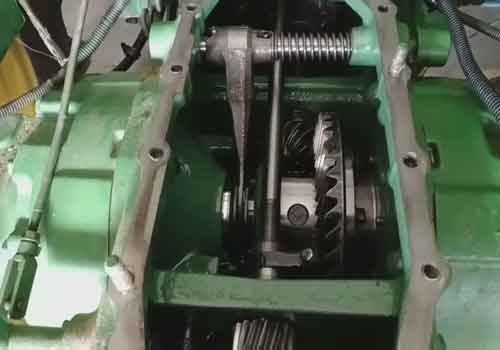
Read More About John Deere X748 Problems
What Happens If You Leave Diff Lock On?
If you leave the diff lock on, it will eventually overheat and cause damage to the differential. The locking mechanism is designed to temporarily lock the two axles together so that they turn at the same speed. This is useful when you are driving in low traction conditions, such as mud or snow.
However, if you leave it on for too long, it can overheat and cause damage to the differential.
How Do You Engage a John Deere Diff Lock?
Most John Deere tractors come with a differential lock lever. This feature is designed to keep both rear wheels turning at the same speed, even if one wheel is on a slippery surface. To engage the diff lock, simply push the lever forward until it locks into place.
Why Would a Differential Lock Up?
Differential locks are used to prevent one wheel from spinning faster or slower than the others. When a differential lock is engaged, it forces both wheels to turn at the same speed, even if one is on a different surface than the other. This can be useful when driving in slippery conditions, such as snow or ice.
It can also help if one wheel becomes stuck in a rut or hole. Differential locks are usually found in four-wheel drive vehicles, but some two-wheel drive vehicles may have them as well.
John Deere Gator Differential Lock Problems
One thing that you can do is check the level of the differential fluid. If it is low, then you will need to add more fluid. You should also check for any leaks in the system.
If there are any, then you will need to repair them before adding more fluid. Another thing that you can do is clean the sensors that are located on the differential lock solenoid. These sensors can get dirty and cause the solenoid to fail.
To clean them, simply disconnect the electrical connector and use a wire brush to remove any dirt or debris. If neither of these solutions works, then you may need to replace the differential lock solenoid. This is a fairly easy repair and can be done at home with basic tools.
However, if you are not comfortable doing this repair yourself, then you should take your Gator to a qualified mechanic or John Deere dealer for assistance.
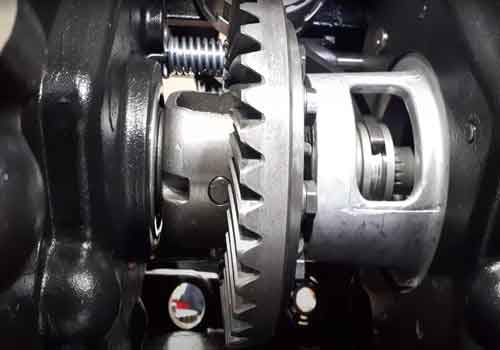
John Deere 1025R Differential Lock Problems
Unfortunately, on the John Deere 1025R, there have been reports of the differential lock not engaging properly. This can cause one wheel to spin faster than the other, which can lead to loss of traction and decreased performance.
There are several potential causes of this problem. First, it could be an issue with the hydraulic system that engages the differential lock. If there is air in the system or if the hydraulic fluid is low, this could cause problems with engagement.
Second, there could be an issue with the differential itself. If it’s dirty or damaged, it may not engage properly. Finally, it’s possible that there is something blocking the locking mechanism from engaging properly.
This could be debris build-up or damage to the locking mechanism itself. If you’re experiencing problems with your John Deere 1025R differential lock, there are several things you can do to fix them. First, check your hydraulic fluid level and add more if necessary.
Next, clean out any debris that might be blocking the locking mechanism from engaging properly. Finally, if all else fails, contact your local John Deere dealer for assistance. With their help, you should be able to get your tractor back up and running in no time.
Mahindra Tractor Differential Lock Stuck
If you’re a farmer, chances are you’ve had to deal with a stuck tractor before. It’s not a fun experience and can cost you valuable time and money. One of the most common causes of a stuck tractor is a differential lock.
Differential lock is designed to keep your tractor from getting stuck in the mud by locking the wheels together. However, sometimes the differential lock can become stuck itself, leaving you stranded. There are a few things you can do to try and fix a stuck differential lock.
First, make sure that the differential lock lever is in the correct position. Sometimes it can become dislodged and won’t engage properly. If that’s not the problem, then you’ll need to check for debris or damage that might be preventing the differential lock from engaging.
Finally, if all else fails, you may need to replace the entire differential lock assembly. Don’t let a stuck tractor ruin your day – follow these tips and get back to work.
John Deere 455 Differential Lock Stuck
If you own a John Deere 455 lawn tractor, you may have experienced the problem of the differential lock sticking. This can be a real pain, as it prevents the tractor from being able to move. Fortunately, there are a few things that you can do to try and fix this problem.
First, make sure that the differential lock lever is in the correct position. It should be all the way to the right when you’re not using it. If it’s in the middle or left position, that could be why it’s sticking.
Next, check for any debris or dirt that might be blocking the mechanism from working properly. If you see anything, remove it and see if that fixes the issue. If neither of those solutions works, your next step is to take apart the differential lock assembly and clean all of the parts with soapy water.
Be sure to dry them completely before putting everything back together again. With any luck, that will fix your stuck differential lock.
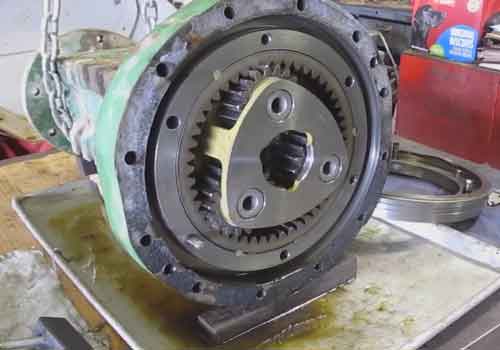
Read Also John Deere 6400 Problems
Kubota Differential Lock Problem
If you have a Kubota tractor with a differential lock, you may have experienced the frustration of the lock not engaging properly. This is a common problem that can be caused by several different factors. One possibility is that the differential lock lever is not fully engaged.
The lever must be pushed all the way forward in order to engage the lock. If it’s not, the lock will not engage properly and may even pop out of position when you try to use it. Another possibility is that the locking pin is not aligning correctly with the hole in the differential housing.
This can be caused by wear and tear on the parts, or simply by dirt and debris build-up over time. Cleaning and lubricating the parts can often fix this issue. If neither of these solutions fixes your problem, it’s likely that there’s something wrong with the differential itself.
This is a more serious issue that will require professional repair or replacement.
Massey Ferguson Differential Lock Pedal
If you’re a farmer or rancher, then you know that having a reliable tractor is essential to your livelihood. And when it comes to tractors, Massey Ferguson is one of the most trusted names in the business.
But even the best machines can have their quirks, and one issue that some Massey Ferguson users have reported is difficulty engaging the differential lock pedal.
The differential lock pedal on a Massey Ferguson tractor is used to engage the front axle and rear axle so that they turn at the same speed.
This is useful for tasks like mowing where you need extra traction and stability. Some users have found that the pedal can be hard to press down, making it difficult to engage the differential lock.
There are a few possible causes for this problem. One possibility is that there is something blocking the path of the pedal, preventing it from being fully depressed. Another possibility is that the spring inside the pedal mechanism may be weak or broken, making it harder to push down.
Or, there could be an issue with the linkage between the pedal and the differential itself. If you’re having trouble engaging your differential lock pedal, first check for any obstructions in its path. Then, inspect the pedal mechanism for any damage or wear and tear which could be causing difficulties.
Finally, make sure all of the linkages are firmly attached and functioning properly. With a little troubleshooting, you should be able to get your differential lock working properly again in no time.
Tractor Locking Differential
When it comes to four-wheel drive vehicles, there are a lot of different systems and components that work together to provide power and traction. One important component is the locking differential, which is often found on tractors.
In this post, we’ll take a closer look at how locking differentials work and how they can be used to improve traction in difficult driving conditions.
Locking differentials are essentially a type of gear system that allows for increased traction by “locking” the wheels together.
When one wheel begins to slip, the other wheel(s) will also rotate at the same speed, providing more grip and power. This can be extremely helpful when driving in slippery or off-road conditions.
There are two main types of locking differentials: automatic and manual. Automatic locking diffs will engage automatically when needed, while manual diffs require the driver to engage them manually (usually with a switch or lever).
Both have their pros and cons, so it’s really up to the driver’s preference as to which type they prefer.
If you’re looking for improved traction on your tractor (or any four-wheel drive vehicle), then a locking differential may be just what you need. Be sure to do your research to find out which type is best for your needs before making a purchase.
John Deere 1025R Differential Lock Pedal
If you have ever experienced a slip while driving your John Deere 1025R, then you know how important it is to have a differential lock pedal.
This pedal allows the driver to manually engage the locking mechanism on the rear axle, which prevents slipping and provides extra traction. The John Deere 1025R differential lock pedal is located on the left side of the floorboard, near the brake pedal.
To engage the differential lock, simply press down on the pedal with your foot. The locking mechanism will engage and you will feel a slight resistance in the pedals. Continue depressing the pedal until you hear a click, which indicates that the differential is fully locked.
Once engaged, the differential lock will remain locked even if you take your foot off of the pedal. To disengage, simply press down on the pedal again and hold it until you hear another click. You can also disengage by pressing down on both pedals at once (the brake and diff lock).
The John Deere 1025R differential lock is an extremely useful feature, especially when driving in slippery or wet conditions. It can help prevent slips and provide extra traction when you need it most.
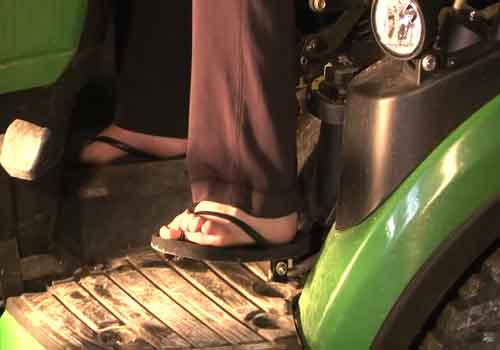
Specification
| Model | 6000 series |
| Steering | Power steering |
| Engine | 85HP |
| Clutch | Electrical |
| Chassis | 4WD |
| Fuel Capacity | 109.8L |
| Weight | 9985pounds |
| Battery | 12V |
| Manufacturer | John Deere |
| Transmission | Hydrostatic |
| Price | $32,500 |
1. Engines:
John Deere engines are designed to be reliable and dependable. Fuel-efficient and low-maintenance, John Deere engines help you get the job done quicker and with fewer trips to the repair shop.
The John Deere engines are available in a variety of sizes and power ratings, allowing you to find the right fit for your needs.
2. Parts:
John Deere offers an extensive line of parts and components to keep your equipment running in top condition.
The company offers a wide selection of parts, including transmission components, filters, lubricants, pumps, and electrical components. All parts are designed to meet the highest standards of quality and performance.
3. Technology:
John Deere is at the forefront of agricultural technology, offering a wide variety of intelligent solutions to help make your operations more efficient. From precision farming information to telematics systems, John Deere’s technology is designed to save you time and money.
4. Service:
John Deere offers a wide range of services, including maintenance and repair, parts and service programs, and financing. The company’s expert technicians are available to provide personalized assistance to help you get the job done right the first time.
John Deere’s commitment to quality and service makes it one of the top choices for agricultural equipment and technology.
With a wide selection of engines, parts, and technology, John Deere is the perfect choice for anyone looking for dependable and reliable equipment. To find out more about the John Deere specification, contact your local John Deere dealer today.
FAQ
Is the diff lock on a tractor useless?
No, the differential lock is not useless. Differential locks are primarily used for slippery roads and light snow conditions to increase traction. This type of lock should never be used on pavement or concrete because it can damage your treads and tires.
What should I do if my differential lock is engaged?
If a differential lock is engaged, you should find a safe place to stop and then disengage it.
How long does the differential lock stay engaged when tires slip?
The differential lock is intended to engage and disengage very quickly, it does not stay engaged over a prolonged period of time. Thus it can only be activated if the rear axle is slipping during braking.
Can I use a diff lock pedal for 2WD?
Diff lock is intended to engage and disengage very quickly, it does not stay engaged over a prolonged period of time. Thus it can only be activated if the rear axle is slipping during braking.
You may still use a diff lock pedal while driving in 2wd, but you need to be careful since sometimes your foot can slip off the pedal during a sudden break or slow down near a corner.
John Deere 6715 differential lock stuck on
Conclusion
Differential locks are an important feature on John Deere tractors that allow the operator to lock the two rear wheels together. This is useful when operating on slippery surfaces, such as in mud or snow, as it prevents one wheel from slipping and losing traction.
However, some users have reported problems with the differential lock engaging and disengaging spontaneously, which can be dangerous if it happens while the tractor is in motion.
John Deere is aware of this problem and has issued a service bulletin to dealerships outlining a fix. The bulletin recommends replacing the differential lock solenoid and wiring harness, which should resolve the issue. In the meantime, operators are advised to exercise caution when
Thanks for reading about John Deere Differential Lock Problems.